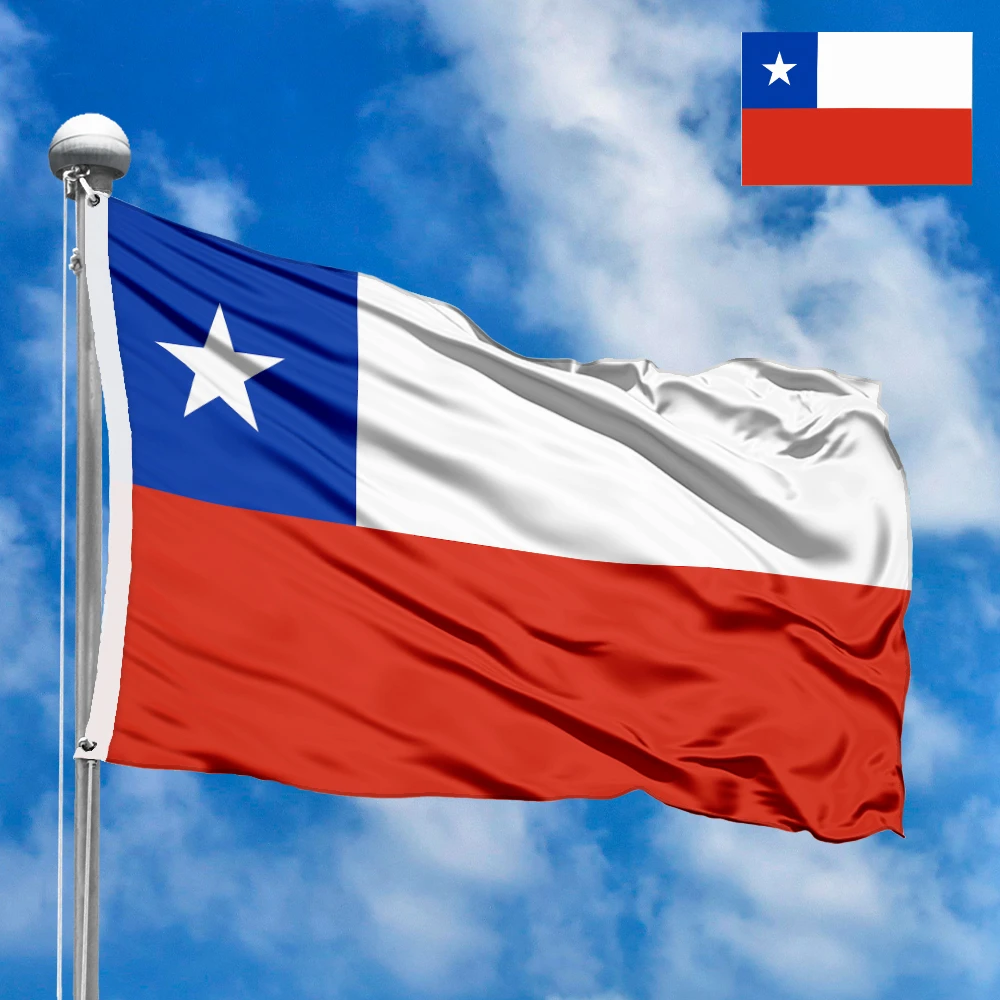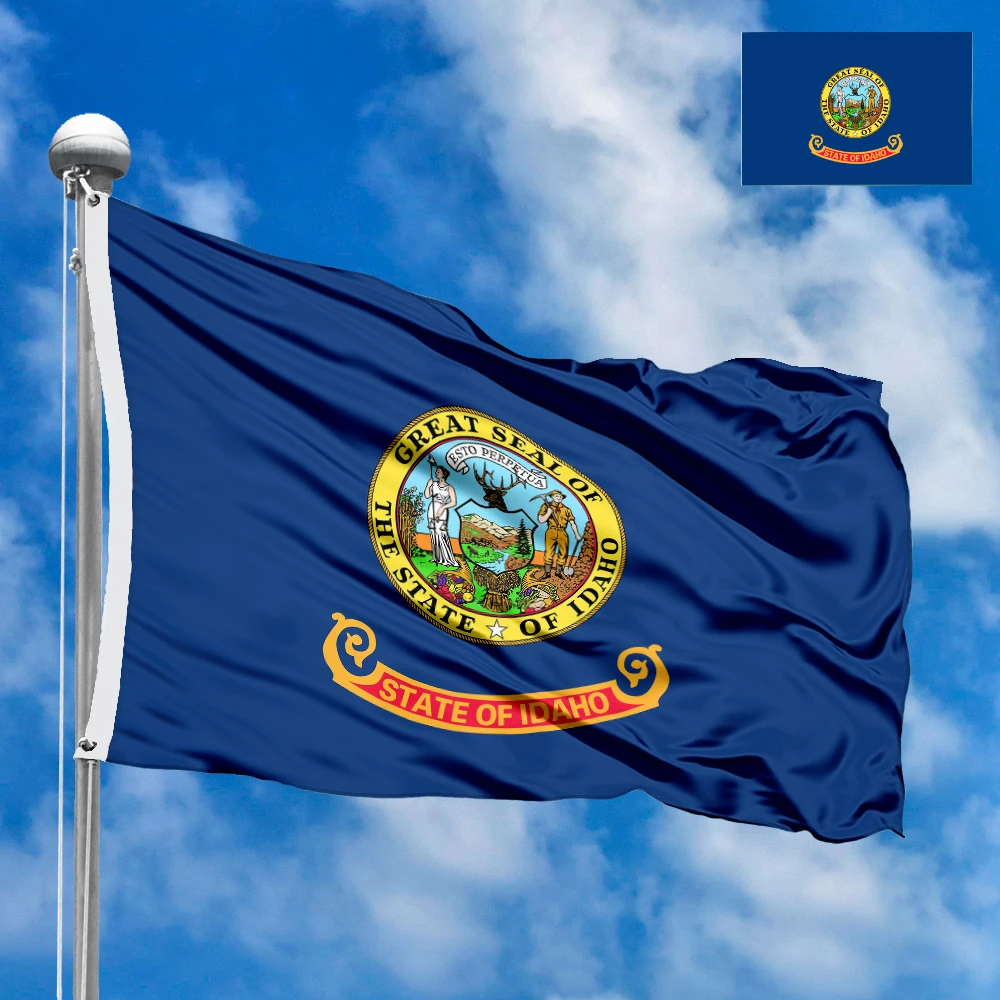The flag of Chile is a powerful symbol that embodies the country's history, geography, and national spirit. Its concise yet expressive design was officially adopted in 1817 and has witnessed all the key events in Chile's history of independence. Each element of the flag carries a deep meaning, reflecting the country's natural beauty, its values, and the courage of its people.
A Detailed Look at the Flag's Design and Symbolism
The national flag of Chile, often referred to as "La Estrella Solitaria" (The Lone Star), consists of two unequal horizontal stripes: a white one on top and a red one on the bottom. In the upper-left corner, a blue square of the same height as the white stripe contains a single five-pointed white star. The flag's design is deceptively simple, but each component is rich with symbolism.
-
Red: The red stripe at the bottom of the flag represents the blood shed by the patriots who fought and died for Chile's independence from Spanish rule. It is a tribute to their valor, courage, and sacrifice in the struggle for freedom.
-
White: The white stripe symbolizes the snow-capped peaks of the Andes Mountains, which run along the country's eastern border. It represents the peace, purity, and untouched beauty of Chile's natural landscape.
-
Blue: The blue square in the canton represents the blue skies and the Pacific Ocean that borders the country's long coastline. It signifies the vastness, the clarity, and the natural beauty of the country's surroundings.
-
The White Star: The solitary white star is a central and powerful symbol. It represents the nation's honor and integrity and serves as a guide to progress and development. It also signifies the single, united state of Chile, reinforcing the country's unity and its journey toward a single, unified destiny. The star's five points are also said to represent the five branches of the Chilean government (executive, legislative, judicial, and the two branches of the armed forces).
The design of the Chilean flag is one of the oldest in the world to have been continuously in use. Its clean lines and bold colors make it a recognizable and iconic symbol of the South American nation.
The History and Adoption of the Flag
The history of the Chilean flag is a fascinating story that mirrors the country's turbulent path to independence. Before the current flag, two other flags were used during the early stages of the independence movement.
-
The Flag of the "Patria Vieja" (Old Homeland): In 1812, during the first period of the independence movement, a flag with three horizontal stripes—blue, white, and yellow—was used. Blue symbolized the sky, white represented the snow of the Andes, and yellow stood for the golden color of the wheat fields. This flag was in use for a brief period before Spanish forces reestablished control.
-
The Flag of the "Transition": After the victory at the Battle of Chacabuco in 1817, a second flag was adopted. This version featured three horizontal stripes: blue, white, and red. This flag was also short-lived, as it was deemed too similar to the flags of other nations, such as the Netherlands and France.
The final, current version of the flag was designed by Minister of War José Ignacio Zenteno and was officially adopted on October 18, 1817. The design was a clever combination of the previous two flags, but with a more distinct and powerful symbolism. The red and white stripes were retained, while the blue and the star were added to the canton. This design became the enduring symbol of the newly independent Republic of Chile.
Meaning and Significance for Residents
For the people of Chile, the flag is not just a national emblem but a profound symbol of their identity, resilience, and pride. It represents the unique geography of their country—stretching from the snow-capped Andes to the Pacific Ocean. The flag honors the sacrifices of their ancestors who fought for freedom and serves as a constant reminder of the hard-won independence. During national celebrations, such as Fiestas Patrias on September 18th, the flag is proudly displayed on homes, buildings, and vehicles, uniting the people in a shared sense of patriotism and heritage. The single star is a powerful representation of Chile's unity and determination to stand as a sovereign, independent nation.
Interesting Facts
-
The Chilean flag is often mistaken for the flag of Texas due to its similar design. However, the Chilean flag's blue field is a canton that does not extend to the bottom of the flag, and the red and white stripes are of equal width. The Texas flag's blue stripe is a vertical band, and the white and red stripes are horizontal and of equal width.
-
The flag is also known for being one of the first flags of a new republic in the Americas to be permanently adopted, pre-dating many others.
-
Chile has strict laws regarding the flag. On certain national holidays, it is mandatory for all public and private buildings to fly the flag.
-
The colors and design of the flag are also reflected in the national coat of arms, which features the same blue, white, and red, along with a star.
-
The Chilean national holiday celebrating the flag, "Día de la Bandera," is not a separate day, but rather the flag is honored as a central part of the country's independence celebrations in September.
In the demonstration images, full-size flags are shown with proportions of 2:3, and hand-held flags with proportions of 1:2.







 Waving flag
Waving flag
 Sizes:
Sizes:
 Round flag
Round flag
 Sizes:
Sizes:
 Rectangular flag 2:3
Rectangular flag 2:3
 Sizes:
Sizes: